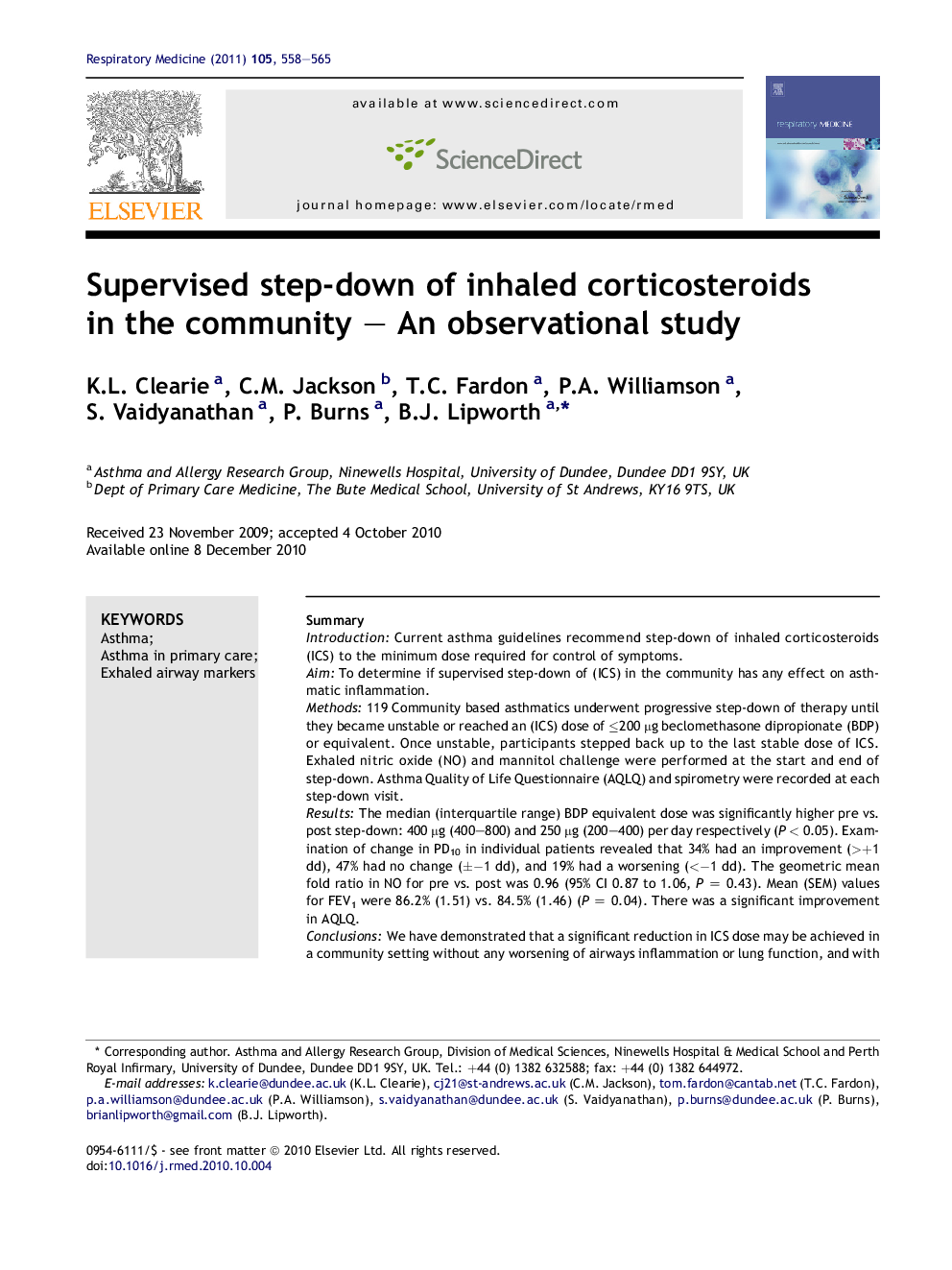| Article ID | Journal | Published Year | Pages | File Type |
|---|---|---|---|---|
| 4211347 | Respiratory Medicine | 2011 | 8 Pages |
SummaryIntroductionCurrent asthma guidelines recommend step-down of inhaled corticosteroids (ICS) to the minimum dose required for control of symptoms.AimTo determine if supervised step-down of (ICS) in the community has any effect on asthmatic inflammation.Methods119 Community based asthmatics underwent progressive step-down of therapy until they became unstable or reached an (ICS) dose of ≤200 μg beclomethasone dipropionate (BDP) or equivalent. Once unstable, participants stepped back up to the last stable dose of ICS. Exhaled nitric oxide (NO) and mannitol challenge were performed at the start and end of step-down. Asthma Quality of Life Questionnaire (AQLQ) and spirometry were recorded at each step-down visit.ResultsThe median (interquartile range) BDP equivalent dose was significantly higher pre vs. post step-down: 400 μg (400–800) and 250 μg (200–400) per day respectively (P < 0.05). Examination of change in PD10 in individual patients revealed that 34% had an improvement (>+1 dd), 47% had no change (±−1 dd), and 19% had a worsening (<−1 dd). The geometric mean fold ratio in NO for pre vs. post was 0.96 (95% CI 0.87 to 1.06, P = 0.43). Mean (SEM) values for FEV1 were 86.2% (1.51) vs. 84.5% (1.46) (P = 0.04). There was a significant improvement in AQLQ.ConclusionsWe have demonstrated that a significant reduction in ICS dose may be achieved in a community setting without any worsening of airways inflammation or lung function, and with an associated improvement quality of life in the majority of patients. This apparent disconnect may reflect enhanced adherence due to supervision of step-down.
